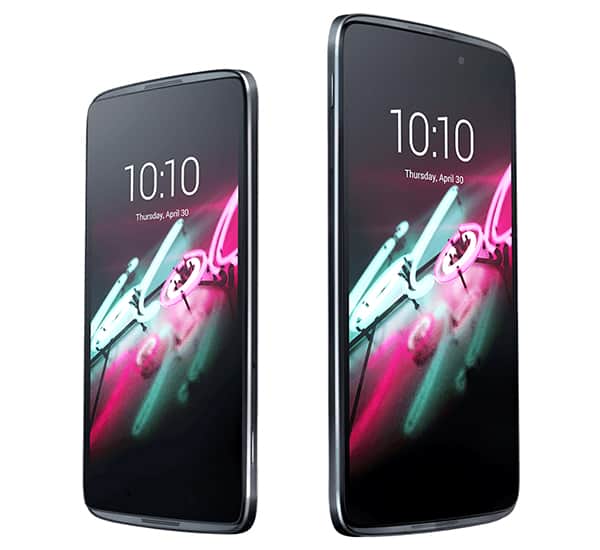
Above: The Idol 3 from AlcatelOnetouch
BitDepth#1030 for March 01, 2016
My first encounter with a smartphone from Alcatel, now trading as Alcatel OneTouch, was in October 2012 at a Digicel event when the line was introduced as a budget alternative to the Blu series, then being championed by rival bMobile.
The phones were pretty standard middle to bottom tier Android devices with a cute but ultimately irritating digital UI that made their homescreen pretty but marginally less accessible.
Fastforward to 2016 and the Idol 3, still to be formally introduced to the Trinidad and Tobago market. Alcatel OneTouch is spottily represented on the device lists of both carriers.
Digicel has the Idol 2 Mini, which sells without a supporting plan for $1,400, but can be bought for as little as $200 with the appropriate postpaid plan.
bMobile offers the Alcatel Fierce for $699 prepaid.
Both are mid to lower range models and it’s been rumoured that the company might be doing manufacturing for a local carrier with a branded line.
The Idol series has always been positioned as a top-of-the-line model by Alcatel OneTouch and the Idol series is their latest flagship.
With no Idol 3 in the lineups of either carrier, the best way to evaluate their relative market positioning is via Amazon, which lists an unlocked Samsung S6 for US$475 and an unlocked Idol 3 for US$227.
So what do you get for roughly half the price, unsubsidized and carrier unlocked?
The Idol 3 is a sleek, modern looking device that is just a bit thicker than the market leading devices it competes with.
Alcatel OneTouch shaves costs by using plastic for the back of the device, though it’s an all-in-one sealed shell that doesn’t expose the battery for user replacement.
The elegant design picked up an award from the iF International Forum Design in February.
The phone ships with Android 5, Lollipop and supports software upgrades.
There are, rather confusingly, a 4.7 inch version of the Idol 3 and a 5.5 inch version. The larger device is excellent, with a screen displaying 1,080 x 1,920 pixels (403 ppi pixel density) that’s crisp and roomy.
It’s a spacious screen for displaying 20 app icons per screen along with the five that remain parked in the bottom row, and it’s luxurious for reading ebooks.
The Qualcomm octacore CPU is brisk and snappy, yielding nothing in responsiveness to other top of the line Android devices.
The device I tested has 2GB RAM and 16GB of internal storage (The dual-SIM model offers 32GB), but the Idol 3 has one feature that most all-in-one smartphone models have dropped, an internal Micro-SD tray.
The implementation is clever. When you slide out the SIM tray, you actually get a much longer tray with space for a SD card of up to 128GB. It’s not the same as say, having a smartphone with 128GB of storage on its logic board, but it’s a budget-focused, feature-strong addition that gives the device quite a bit of elbow room.
Huawei’s Mate S also includes this feature and Samsung’s new S7 reintroduces it. Most sealed smartphones with this feature also have variants with dual SIM capacity, so being able to place two user removable chips in an easily modified tray without changing the external design of the device is sensible.
With a 64GB SD card, you’re likely to have more than enough room for all the personal media you might want to have available in your pocket.
The 8MP front facing camera and 13MP rear facing camera offer image quality that’s in line with competitive models, though they both drop short of best-in-class devices sporting better optics and software features.
The Idol 3 offers what Android offers, which is good, but not exceptional.
The smartphone’s big feature is JBL engineered sound and earbuds designed for the phone from that company.
The company has amplified that “boom” concept with the recently released Idol 4, which has a button dedicated to making both sound and visuals brighter.
Alcatel OneTouch is smart enough to realise that their device may not attract the immediate attention of third-party case makers in the crowded Android device marketplace and packages the phone with a clear plastic protective shell (surprisingly good) and protective screen (appallingly bad).
The Idol 3 also ships with a collection of non-removable crapware, primarily Gameloft games, that it would be lovely to be able to dump off the system, but you can’t.
Beyond that peeve, the Idol 3 is an excellent and capable Android smartphone that’s both attractively designed and hardware capable.


